Entry Database : PDB / ID : 2mzdTitle Characterization of the p300 Taz2-p53 TAD2 Complex and Comparison with the p300 Taz2-p53 TAD1 Complex Cellular tumor antigen p53 Histone acetyltransferase p300 Keywords Function / homology Function Domain/homology Component
/ / / / / / / / / / / / / / / / / / / / / / / / / / / / / / / / / / / / / / / / / / / / / / / / / / / / / / / / / / / / / / / / / / / / / / / / / / / / / / / / / / / / / / / / / / / / / / / / / / / / / / / / / / / / / / / / / / / / / / / / / / / / / / / / / / / / / / / / / / / / / / / / / / / / / / / / / / / / / / / / / / / / / / / / / / Biological species Homo sapiens (human)Method / Authors Miller Jenkins, L.M. / Feng, H. / Durell, S.R. / Tagad, H.D. / Mazur, S.J. / Tropea, J.E. / Bai, Y. / Appella, E. Journal : Biochemistry / Year : 2015Title : Characterization of the p300 Taz2-p53 TAD2 Complex and Comparison with the p300 Taz2-p53 TAD1 Complex.Authors : Miller Jenkins, L.M. / Feng, H. / Durell, S.R. / Tagad, H.D. / Mazur, S.J. / Tropea, J.E. / Bai, Y. / Appella, E. History Deposition Feb 11, 2015 Deposition site / Processing site Revision 1.0 Mar 25, 2015 Provider / Type Revision 1.1 Apr 8, 2015 Group Revision 1.2 Jun 14, 2023 Group / Database references / OtherCategory database_2 / pdbx_database_status ... database_2 / pdbx_database_status / pdbx_nmr_spectrometer / struct_ref_seq_dif Item _database_2.pdbx_DOI / _database_2.pdbx_database_accession ... _database_2.pdbx_DOI / _database_2.pdbx_database_accession / _pdbx_database_status.status_code_nmr_data / _pdbx_nmr_spectrometer.model / _struct_ref_seq_dif.details Revision 1.3 May 15, 2024 Group / Database references / Category / chem_comp_bond / database_2 / Item
Show all Show less
 Yorodumi
Yorodumi Open data
Open data Basic information
Basic information Components
Components Keywords
Keywords Function and homology information
Function and homology information Homo sapiens (human)
Homo sapiens (human) Authors
Authors Citation
Citation Journal: Biochemistry / Year: 2015
Journal: Biochemistry / Year: 2015 Structure visualization
Structure visualization Molmil
Molmil Jmol/JSmol
Jmol/JSmol Downloads & links
Downloads & links Download
Download 2mzd.cif.gz
2mzd.cif.gz PDBx/mmCIF format
PDBx/mmCIF format pdb2mzd.ent.gz
pdb2mzd.ent.gz PDB format
PDB format 2mzd.json.gz
2mzd.json.gz PDBx/mmJSON format
PDBx/mmJSON format Other downloads
Other downloads 2mzd_validation.pdf.gz
2mzd_validation.pdf.gz wwPDB validaton report
wwPDB validaton report 2mzd_full_validation.pdf.gz
2mzd_full_validation.pdf.gz 2mzd_validation.xml.gz
2mzd_validation.xml.gz 2mzd_validation.cif.gz
2mzd_validation.cif.gz https://data.pdbj.org/pub/pdb/validation_reports/mz/2mzd
https://data.pdbj.org/pub/pdb/validation_reports/mz/2mzd ftp://data.pdbj.org/pub/pdb/validation_reports/mz/2mzd
ftp://data.pdbj.org/pub/pdb/validation_reports/mz/2mzd Links
Links Assembly
Assembly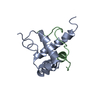
 Components
Components Homo sapiens (human) / Gene: EP300, P300 / Plasmid: pJT57 / Production host:
Homo sapiens (human) / Gene: EP300, P300 / Plasmid: pJT57 / Production host: 
 Homo sapiens (human) / Gene: TP53, P53 / Plasmid: pGEX4T-1 / Production host:
Homo sapiens (human) / Gene: TP53, P53 / Plasmid: pGEX4T-1 / Production host: 
 Sample preparation
Sample preparation Processing
Processing Movie
Movie Controller
Controller



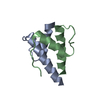
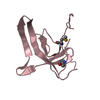


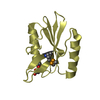
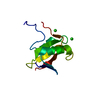
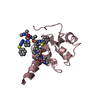
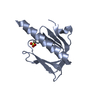
 PDBj
PDBj



























 HSQC
HSQC